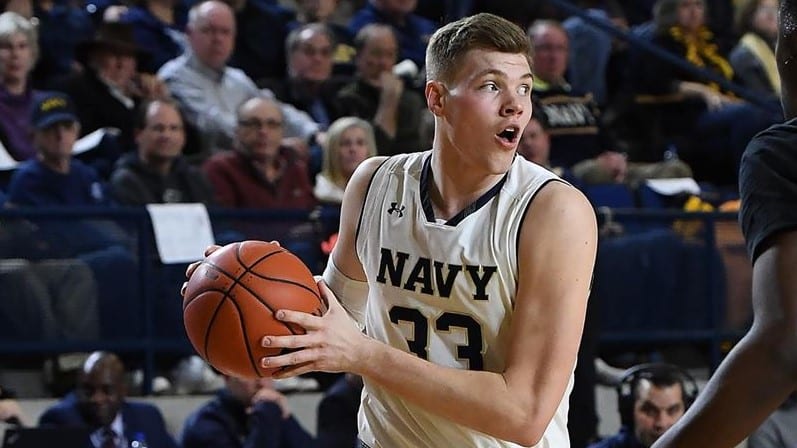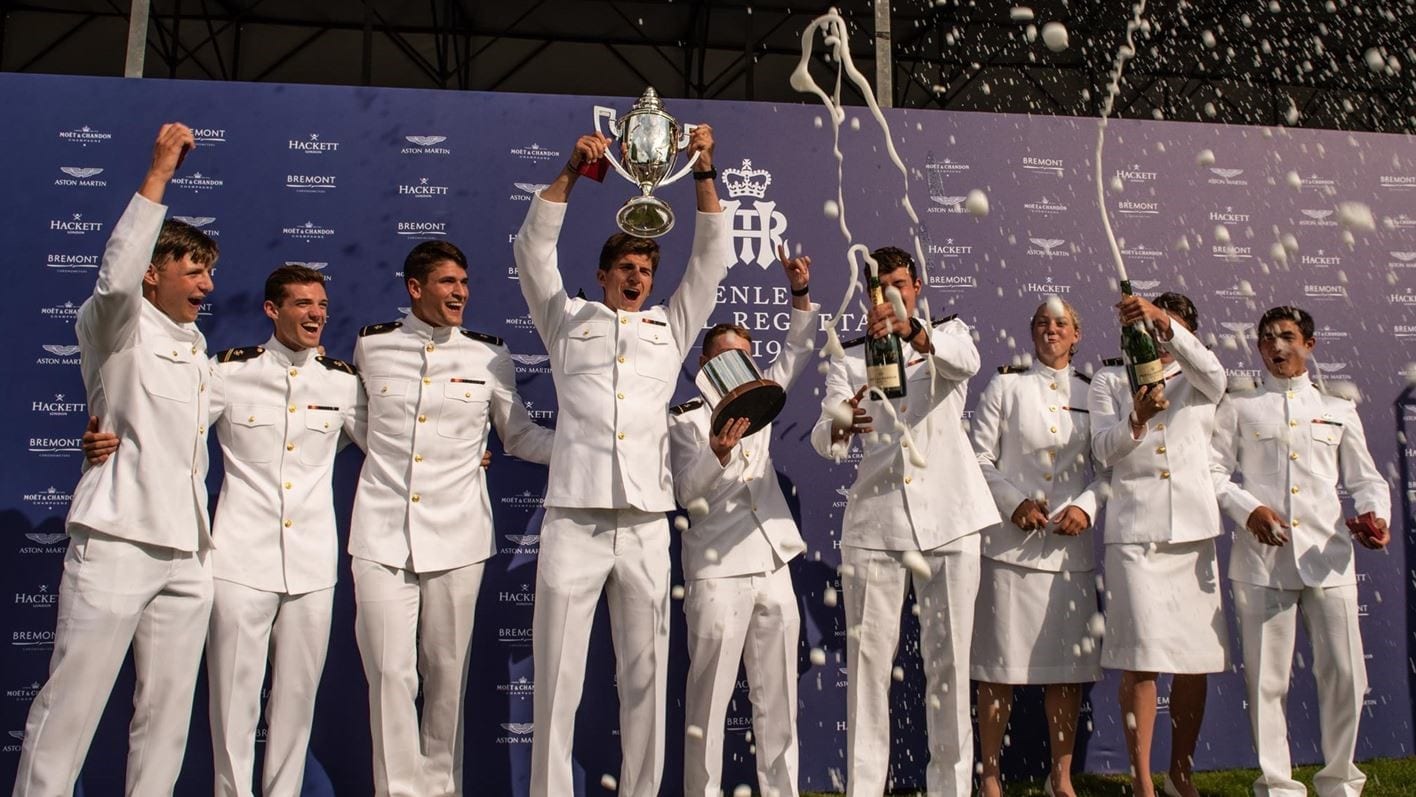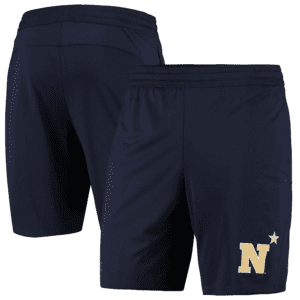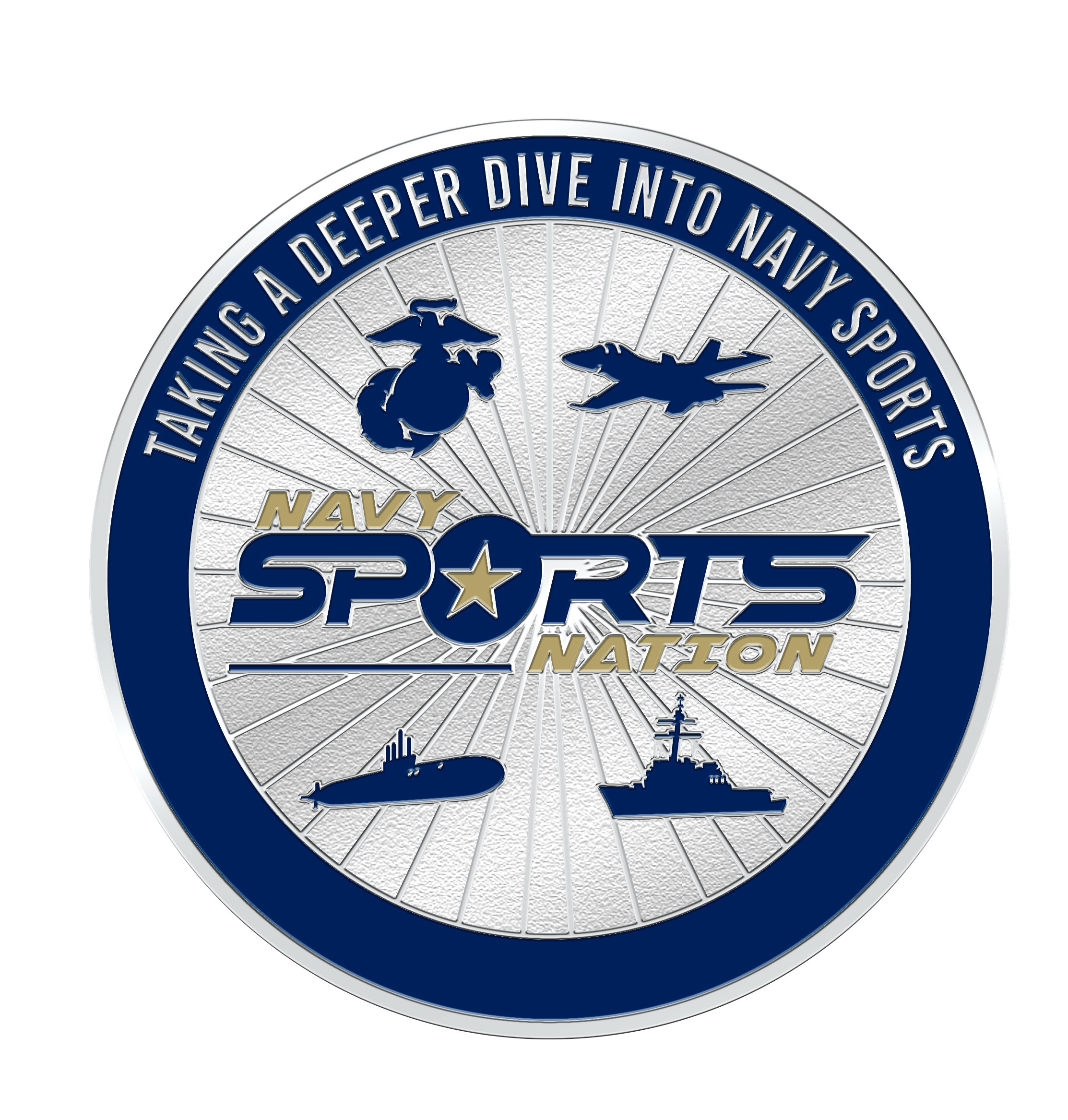Three Races, One King’s Cup: A Look Back at How the Navy Rowing Team Became the Toast of the Henley Royal Regatta
To compete and win at an elite level. It’s every athlete’s dream. So many strive for it, but only a select few ever achieve it. So when the opportunity to compete in an elite international event presented itself to the Navy Rowing team, they definitely wanted to make the most of it. After all, who knows if such a chance would ever come along again?
The team found itself in exactly this position last summer. Earlier in the year, it was selected as the U.S. Armed Forces representative in a race commemorating the 100th Anniversary of the King’s Cup. It would take place in England in early July. I’ll get into the history of that event in a minute. But first, I wanted to let you all know that of all the content I have published in the Navy Sports Nation so far, the material you are about to read has been the most fun to pull together. Here’s why . . .
A Collaborative Effort
The idea for this feature actually came from two of my classmates who were on the Navy Rowing team when we were at Annapolis. Scott “Gordie” Gordon and Tom Callahan are my collaborators on this piece. Both live in Virginia. Gordie resides in Chesapeake where he coaches a club rowing team, while Tom is not far away in Virginia Beach.
Until I spoke with them, I was totally unaware of what the King’s Cup was or the fact that the Navy team was even representing our country. I remember thinking how much I respected those on the rowing team when I was at the Academy. I used to see them out on the water in some of the most miserable conditions. But my knowledge of the sport did not go much beyond what I saw in the Olympics every four years. So whether or not you know anything about this grueling but beautiful sport, stay with us. Because we are going to share some pretty cool stuff with you.
We’ll start by talking about the athletes that make up Navy’s rowing team. After that comes a crash course in the types of events, the training, and the typical race distances. Then we’ll get up to speed on the history of the King’s Cup and how the Mids performed at this elite event.
The Athletes
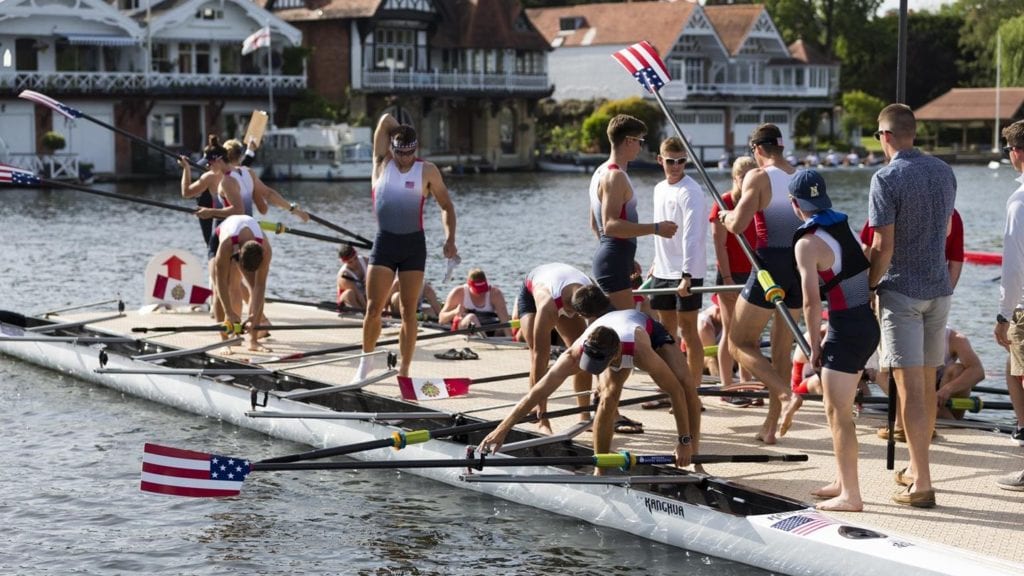
The major sports at the Academy recruit dozens of athletes to fill their ranks. But rowing is not very prevalent at either the high school or club level. There are definitely some great programs out there, but they are no where near the number of the other sports like football, basketball, or even swimming and tennis. Gordie reached out to Navy’s Assistant Coach John Flynn to get a rough number of Navy recruits each year. It turns out that they bring in 6 – 8 per class. Last year’s Heavyweight team had 67 rowers on the roster, and 21 of them were freshmen. That means about two-thirds of them walked on. You can figure on similar numbers for the lightweight and women’s teams.
Think about what that means for a minute. The large majority of rowers come to Navy with little or no experience. If they have an endurance background like running or swimming, it’s definitely a plus. From there, they train to the point where they can compete with the best in the world. That’s pretty impressive, and it should tell you something about the quality of Navy’s program.
Types of Rowing Events
Rowing consists of two different events that are defined by the number of oars the rower uses. The first is Sculling, where two oars are used. The crew size determines the shell’s length. One person (single) – 27 ft., Two person (double) – 33 ft. and four (quad) – 44 ft. The oars (or sculls) are nine feet long. Even though the Naval Academy does not compete in this event, I figured it was worth mentioning for the sake of completeness.
We’ll spend the rest of our time discussing the second type of rowing event. The Navy Rowing team competes in Sweep rowing, where each crew member has one oar. Here are the crew sizes and corresponding shell lengths: two rowers (pair) – 33 ft., four rowers (four) – 43 ft., four rowers with coxswain – 45 ft. and eight rowers with coxswain – 62 ft. Each rower uses one 12 foot oar and they all sit in line with the oars on alternating sides of the boat. Finally, the coxswain is located in the bow (four) or stern (eight) to steer and serve as mini-coach. Now lets move on to how the team trains.
The Training
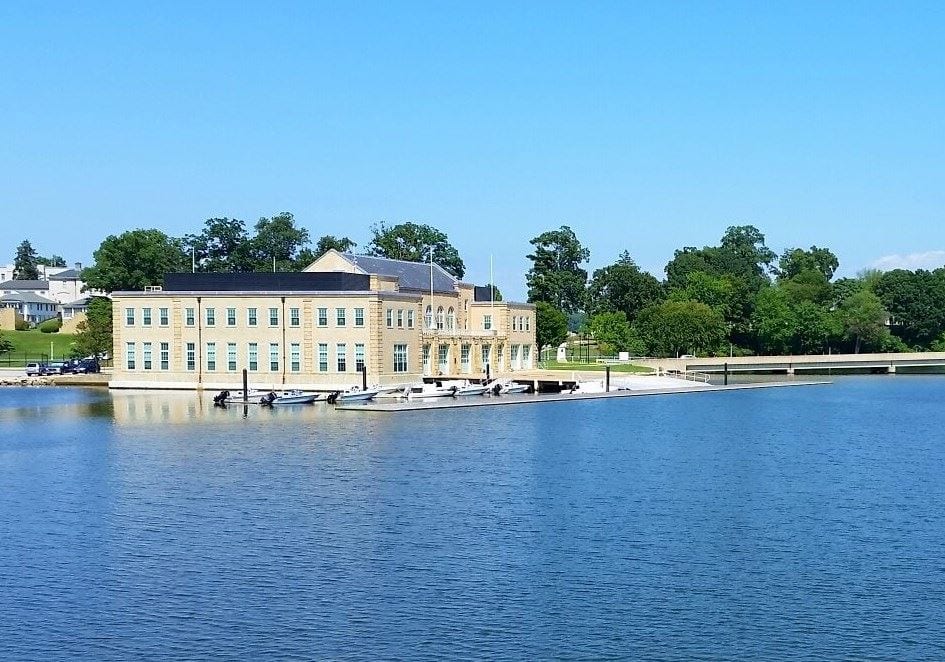
Gordie and Tom provided a wealth of information on the training routine. The Navy Rowing team operates out of Hubbard Hall, known as “The Boat House.” I think I was in there once when we had an orientation during Plebe Summer, but that was about it. Hubbard sits right on Dorsey Creek, which connects directly to the Severn River. Gordie shared that you’ll find the team on the water whenever the river is rowable. Besides that, the workouts consist of putting in a ton of time on the indoor rowing machines. This is commonly referred to as “erg” training (short for ergonometer, like the Concept 2 indoor rowing machine). When the athletes aren’t on the water or rowing machines, they are either weight training, doing aerobics, or getting work done in the rowing tank. Each team member’s goal is to “make the boat” for the next race.
Regarding race distances, the team trains for 5,000 meters in the fall and 2,000 meters in the spring. The 2,000 meter distance is considered a sprint. No doubt it can get to be a grind sometimes. That’s true with any sport. But like I mentioned earlier, they do it for the chance to compete at an elite level. And for the Navy Rowing team, one such opportunity came in the summer of 2019, on a stretch of river 2,112 meters long, in a little English town about an hour west of London called Henley-on-Thames.
The King’s Cup Backstory
The First World War practically destroyed an entire generation. And in 1919, those countries involved in the conflict had only just started healing. That’s when King George V of England got the idea to use sports to help that process along. In July 1919, he organized a rowing event as part of the Henley Royal Regatta to promote peace and bring back some sense of normalcy. He invited military rowing teams from six allied nations to participate: France, the United Kingdom, Australia, New Zealand, Canada and the United States. And it was called the King’s Cup. The Australians took it home that year. But for whatever reason, it was the only time the race was part of the Henley Royal Regatta. That was until a man named Chris Hartley decided to bring it back a hundred years later.
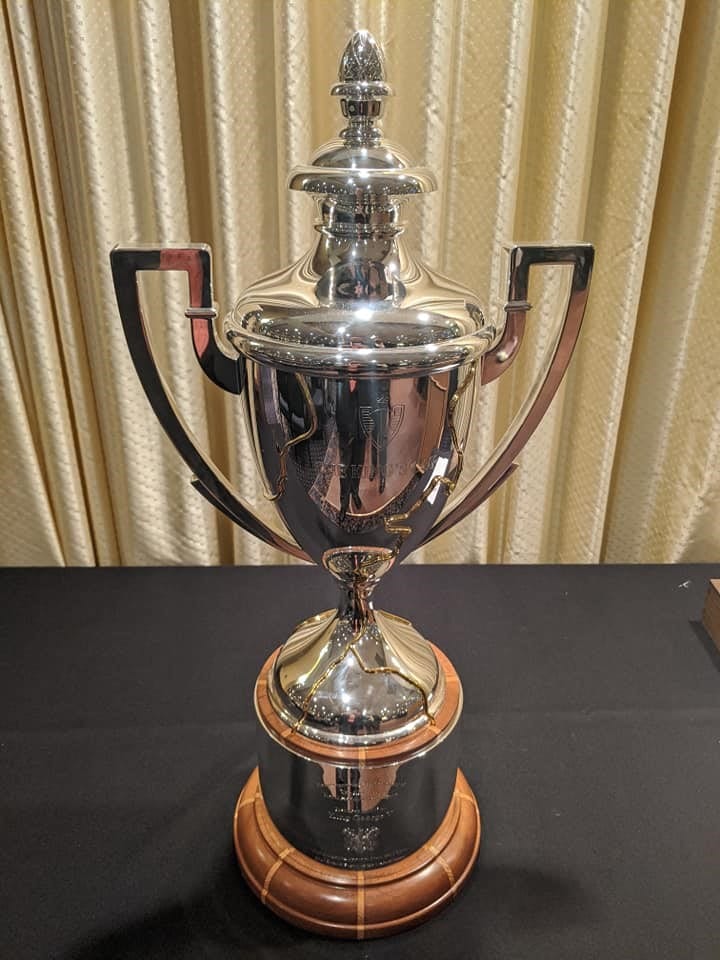
Hartley was on the Henley Royal Regatta planning committee for 2019. He saw a great opportunity to commemorate the 100th anniversary of the first King’s Cup race by once again making it part the Regatta. So he invited military teams from the original six nations plus Germany and the Netherlands. And it was a relatively new twist that generated quite a bit of interest. For the first time at Henley, the race would be run with crews made up of both men and women. This proved to be a very popular innovation.
So, now a decision needed to be made with respect to who would be representing the United States. Other countries sought to fill their eight person crew with former Olympians or rowers with years of experience. But the U.S. decided to go in a different direction.
Team Selection
To me, selecting the Navy Rowing team to represent our country in the King’s Cup was pretty much a no-brainer. It had been together all year and would just be coming off the IRA (for the men) and NCAA (for the women) Championships. So, conditioning could very well be an advantage. It turns out that those making the decision came to the same conclusion. And I’m pretty sure they arrived at it pretty quickly, seeing how they know far more about rowing than I do.
Six men and two women made up the team that Navy brought to the King’s Cup. In preparing for the event, they did have to account for a few things that would be obvious only to those who knew the sport. Gordie shared some great insight here. “Jumping into a boat with athletes where there is a 30 lb. weight difference and a 6 to 9 inch height difference means a huge adjustment to rowing styles . . .” This led to a certain logic when placing the crew. He and Tom pointed out that “the coxswain and the lightweights in the stern (seats 7 & 8) set the cadence and the pace for the shell. The heavyweights in seats 3 – 6 (the ‘Engine Room’) provided the majority of the power, and the women in the bow (seats 1 &2) brought the absolutely necessary form and style to balance the boat.”
So even though selecting the Navy Rowing team to represent the country was a logical choice, it wasn’t exactly a plug and play situation. The team needed to blend their styles so that they rowed as one unit with precision and power. And they didn’t have a lot of time to fine tune everything between the end of the collegiate rowing championships and the Henley Royal Regatta scheduled for early July.
The 2019 King’s Cup
Rowing regattas offer different racing formats. I learned from Tom that the King’s Cup was a single elimination knockout race with two teams rowing side by side over a distance of 1 mile, 550 yards (2,112 meters). There were other races at the regatta besides the King’s Cup , and they were by invitation only as well. The limited field meant that it was reserved for the best international rowing teams in world. So a win at the Henley Royal Regatta is considered the equivalent of winning a World Championship or Olympic event. Teams taking home a trophy are recognized as being among the elite in the international rowing community.
The Navy team took care of business in the quarterfinals by quickly disposing of the Canadian team, winning by over 3 and 2/3’s boat lengths. That’s about 75 yards, in case you were wondering. The semi-final result against the French team wasn’t much different. The Mids got out early, built a big lead and cruised to a win by just over three boat lengths. Waiting for them in the final was a German Armed Forces team that brought quite a bit of experience, including one former Olympic champion.
Racing Strategy
I asked Tom and Gordie about a typical strategy in a sprint race like the King’s Cup. It helps to have that context when you watch the video of the race. And trust me, you’re going to want to do that. Anyway, in the most simple terms, the very start of the race is pretty high-paced. It takes a lot of energy to get roughly 1,750 pounds of boat and crew moving. Newton’s first law is no joke in this case.
In the next stage up through 500 meters, the team settles into a rhythm based on a certain strokes per minute rate. From 500 to 1,500 meters the coxswain calls for adjustments to the stroke rate depending on where the boat is in relation to the rest of the field. The rates would likely be somewhere in the high 30s. The next stage is the last 500 meters, which includes the Red Zone (last 250 meters). That’s where the fun begins.
The boat is now in total sprint mode. Each team member is pulling with power at max capacity at a rate of over 40 strokes per minute. Their legs are burning and their lungs are practically an inferno. The last 250 meters is completely anaerobic. The team only feels the boat’s movement and they aren’t hearing much of anything except for maybe the coxswain’s encouragement. The main focus is on executing strong powerful strokes all the way through the finish line and listening for the sweet sound of that horn as they cross.
The Final Race
You can click here to watch the final race between the Navy Rowing team and the German Armed Forces. I will also put it in our video archives. The two broadcasters making the call do a very good job. You’ll get a full appreciation of what is happening as the race progresses. So there is no need for me to provide a minute by minute recap.
I would ask you to pay particular attention to one thing when they show the Navy boat, though. Watch how the oar blades come out of the water in unison, rotate as one, and then go back in to execute the next stroke. The best place to watch is from about the 2:53 to the 3:20 mark. I am really big on precision, and these eight athletes are moving totally in concert with each other. It really is beautiful to watch.
At the end of the day, Navy’s superior team chemistry and conditioning was the difference in the race. Though they trailed by close to a boat length early, the crew rallied to get their bow in front to take the lead with about 600 meters to go and never gave it up. Finally, they crossed the finish line three quarters of a boat length in front of the German team to win the King’s Cup in what turned out to be a pretty dramatic finish. The Mids had done it, and now they ranked among rowing’s royalty.
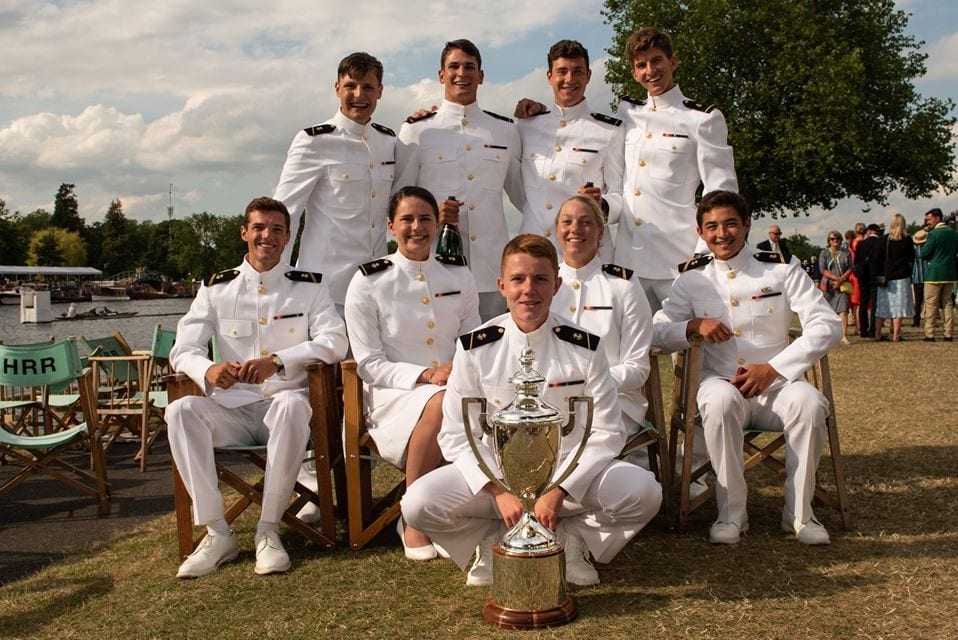
In front: Coxswain Matthew Catanoso (Photo Courtesy of Scott Gordon)
What Makes Rowing Different
I can only imagine how each team member felt when the Navy boat crossed the finish line first. Without a doubt, it will remain one of the major highlights of their rowing careers. To that point, I asked Gordie and Tom about what they remembered most from the years they competed at the Academy. And while they rowed to win races, both said their best memories were of competing for a seat in the boat against their teammates while building such a close-knit team at the same time. They drove each other to be the best and became best friends in the process. It’s a sentiment that athletes at all levels often express. But as I thought about what they said as it specifically related to rowing, I couldn’t help but think that their connection might be even more powerful than in other sports. Here is what I mean . . .
When I watch team sports, I find it very interesting to observe how each team member’s role contributes to its success. And those roles are different in pretty much every sport. In football, a defensive lineman has a completely different job than the quarterback. But if both players do their jobs well along with the rest of the team, the result is usually a win. In fact, I can name at least half a dozen sports off the top of my head where the exact same thing is true (basketball, baseball, hockey, soccer, lacrosse, and volleyball). And in each of them, the strong bonds formed between teammates are ones they talk about long after their competitive days are over.
The Key Difference
But here is why I think rowing is different, and I’ll use the Navy King’s Cup crew as an example. These teammates trained extremely hard to perform one specific job to the best of their ability. The same job – pulling an oar through the water to move the boat forward. And even though that seems simple enough, it doesn’t even begin to describe the focus necessary to execute it in unison, with both power and precision at an elite level for a sustained period of time.
Breaking Down the Numbers
Let’s look a little deeper using some basic math. The Mids won the King’s Cup final with a time of 6 minutes, 33 seconds. We’ll use an average rate of 40 strokes per minute for the entire race. That estimate is based on Gordie’s description when he spoke about race strategy. So, 40 strokes per minute over roughly six and a half minutes come to about 260 strokes. But keep in mind, that is 260 strokes per crew member, so now you have a total of 2,080 combined strokes. Can you imagine the focus necessary for eight athletes to collectively repeat the same motion over and over again nearly 2,100 times? You would practically have to be of the same mind to pull that off.
One Job, One Focus, One Mind
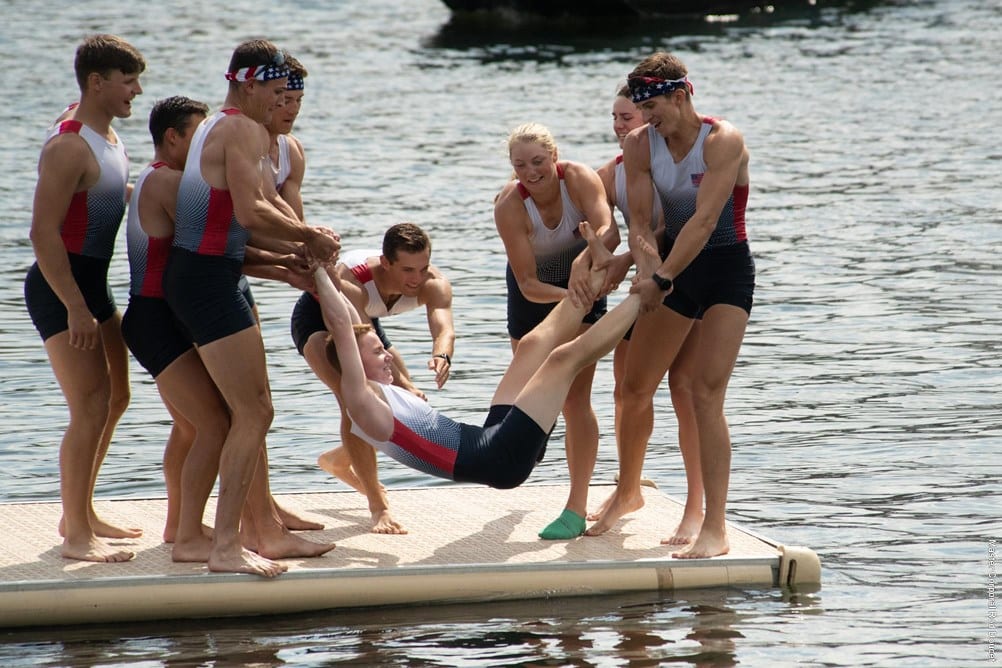
That’s why I think the bonds formed between athletes on a rowing team might be just a little bit stronger than most other sports. They train for years to move and think as one person in competition. Maybe you’ve had the experience of being in “the Zone” when you competed. Now, take that feeling and multiply it by eight while winning an elite international event. Are you starting to get the picture? The athletes on Navy’s rowing team train to perform the same job, with the same intense focus, while being of the same tough mind every time they get into that boat. And after years of pushing each other to be better, it’s easy to see why that experience ranks so high among their best memories. It would definitely be one of mine.
Until next time . . .
Thank you Navy Sports!
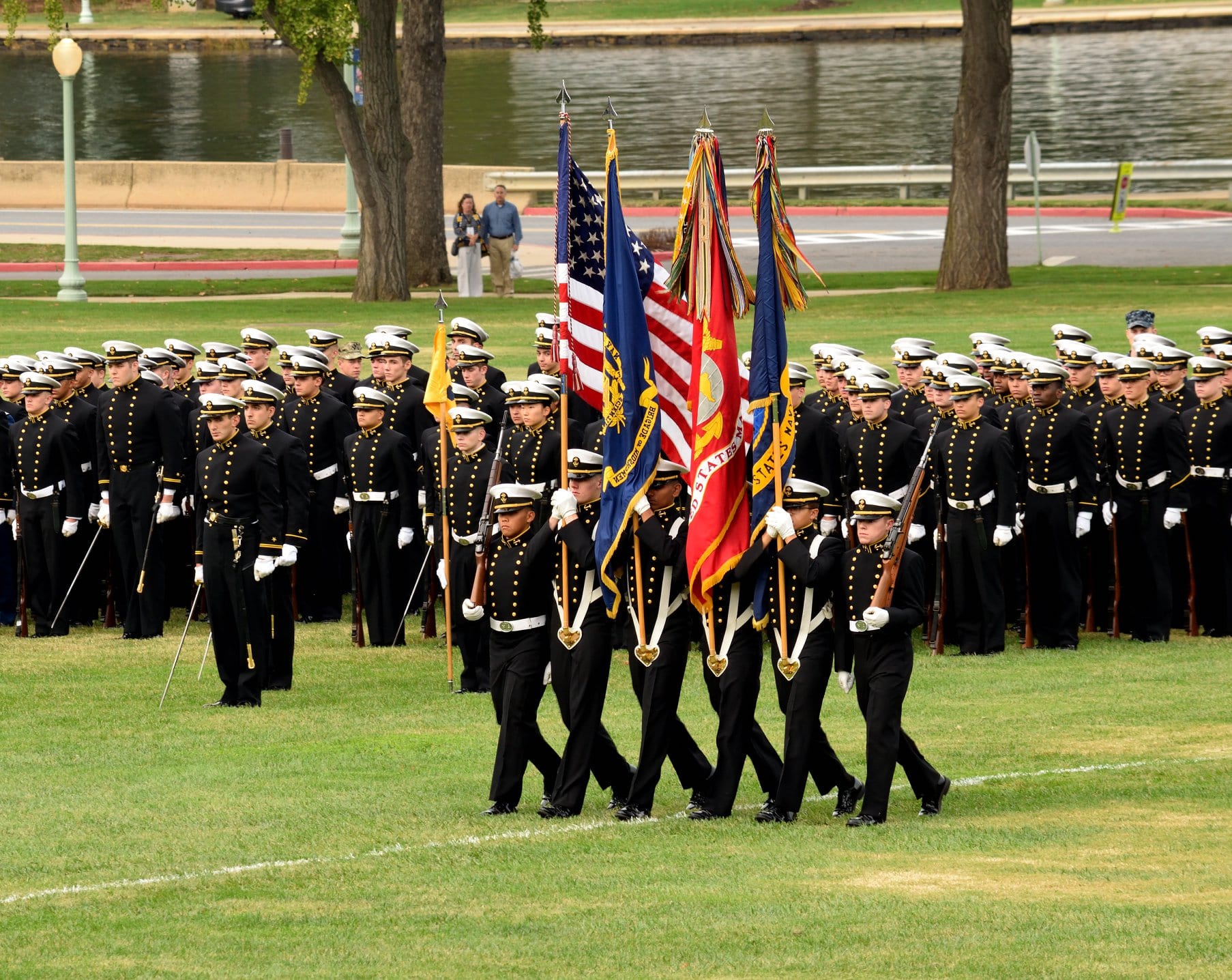
My sincere thanks to Scott Strasemeier, Senior Associate AD for Sports Information at the U.S. Naval Academy for granting permission to use images and video from the Navy Athletics media library. All photos used from this source will be properly credited in the caption. The only exception would be if the photo is used as a feature image where no caption is visible.
Follow Us
Share this story!
Related Links
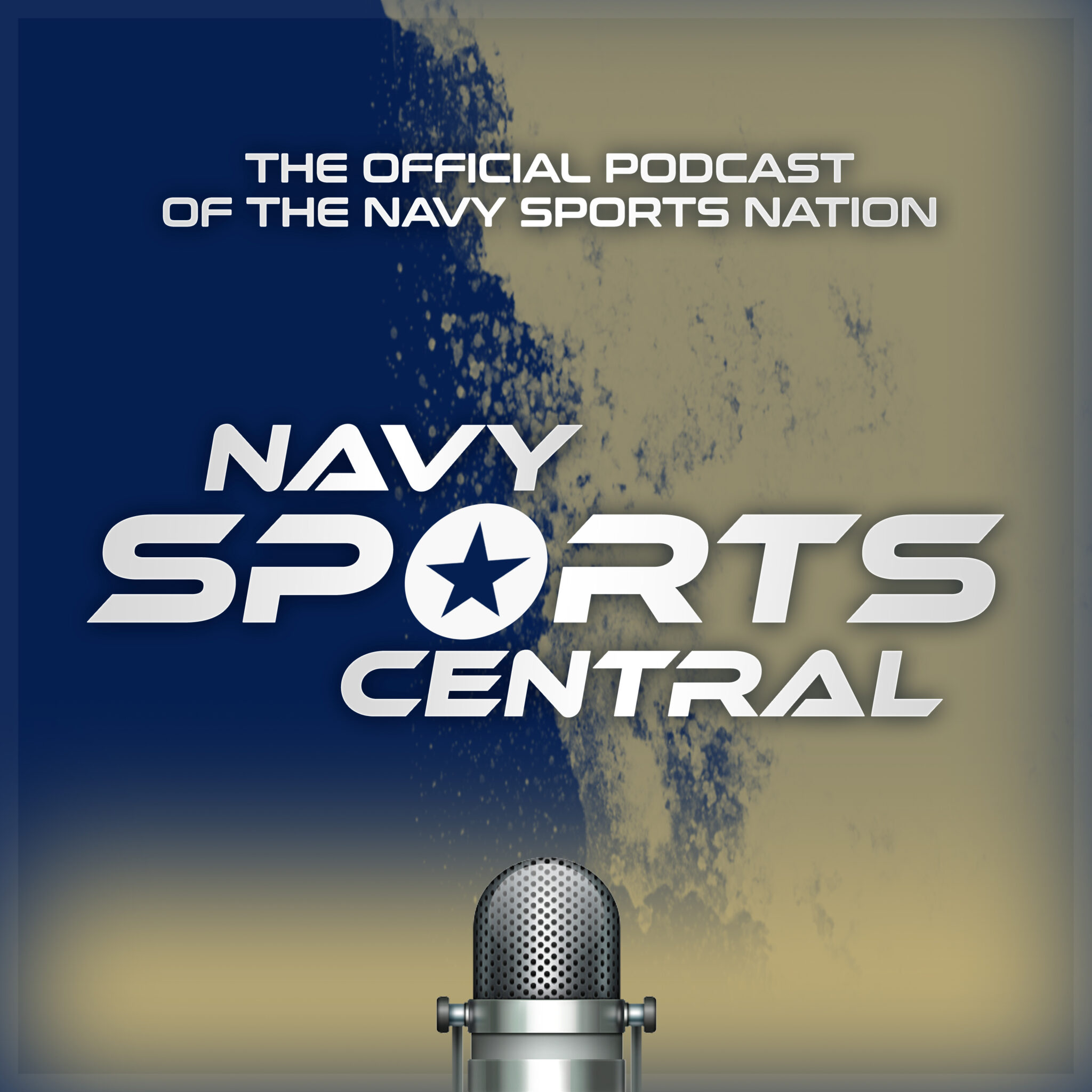
Shop for Merchandise
Featured Products
As an affiliate partner, Fanatics shares a small percentage of each sale through these links with the Navy Sports Nation which will be used to maintain the website. Thanks for your support!
Did you know…
Navy and St.Mary’s are the only two rugby programs in the country that have produced two Rudy Scholz Award winners. The award for the collegiate rugby player of the year was first given out in 2016.
Connor McNerney was the Naval Academy’s first recipient in 2018. This year, Lewis Gray earned that honor. It was a fitting end to his outstanding career.
Favorite Books
Click on the images to buy these two “must have” books for all Navy football fans. As an Amazon associate, I earn from qualifying purchases.
cRA Div. 1 National Championship Highlights
Karl Darden
I am a Navy veteran and a graduate of the U.S. Naval Academy. The idea to start this blog actually came from my classmates. I hope you enjoy reading this content as much as I enjoy writing it. Go Navy!! Beat Army!!
